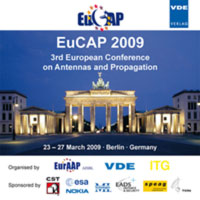Modeling of the Backscatter Behavior of Typical Antipersonnel Landmines by computer Simulations
Conference: EuCAP 2009 - 3rd European Conference on Antennas and Propagation
03/23/2009 - 03/27/2009 at Berlin, Germany
Proceedings: EuCAP 2009
Pages: 4Language: englishTyp: PDF
Personal VDE Members are entitled to a 10% discount on this title
Authors:
Alawneh, Isam; Edenhofer, Peter (Faculty of Electrical Engineering and Information Technique, Ruhr University Bochum,)
Beine, Christian (Microwaves and Radar Institute, German Space Agency, Münchener Strasse 20, 82234 Wessling, Germany)
Plettemeir, Dirk (Faculty of Electrical Engineering and Information Technique, Dresden University, 01062 Dresden, Germany)
Abstract:
This work will focus on modeling of different types of antipersonnel land mines (APL's) without environment (i.e., in free space). The received backscattered electric fields as a function of the frequency (called fingerprints) are computed at different distances above the mines computed by using different excitations, i.e., dipole, point source, and homogenous plane wave. The work is devoted to study the Ground Penetrating Radar (GPR) sensor as a promising tool for humanitarian demining. For a reliable detection of antipersonnel land mines it is necessary to calculate the electromagnetic backscattering characteristics in order to make an accurate modeling of the material properties which are important to identify modern plastic antipersonnel land mines in a realistic environment. These interactions can play the role in making false alarms when they are embedded in a realistic environment. To increase the spatial resolution of the operating radar, the simulations have been done in the frequency range 200 - 8000 MHz. To model these APL mines, the Integral Equation Method - Method of Moments (MoM) and the Finite difference in Time Domain (FDTD) have been used.


